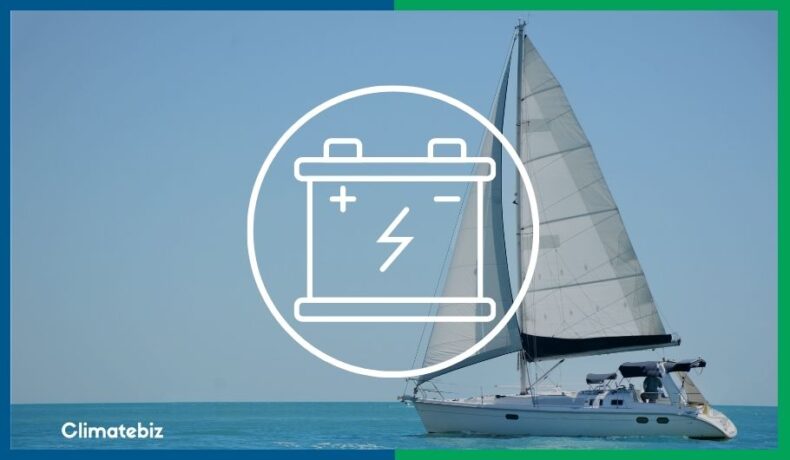If you’re here to learn more about deep cycle marine batteries and see what the market has to offer, you’ve come to the right place!
Deep cycle batteries are very common and reliable battery sources that are used for various applications such as off-grid renewable energy, golf carts, and forklifts.
For marine applications, various types of battery sources are available. In this article, we summarize the options available for different boat sizes so you can choose the best option for your needs!
There are currently dozens of deep cycle battery manufacturers to choose from. For your convenience, we’ve compiled 11 of the most popular ones, including:
- Optima
- Odyssey
- Renogy
- Expert Power
- ECI Power
- Bass Pro
- Mighty Max
- V Max
- Battle Born
- Chins
- Ampere Time
Additionally, we’ll provide you with more about deep cycle batteries and their expected lifespans.
Table of Contents
What Is A Deep Cycle Marine Battery?
A deep cycle marine battery is the ideal choice for powering an electric trolling motor as well as other electric battery-powered accessories, including radio/ audio systems, windlass, depth finders, fish locators, and other appliances.
While similar to car batteries, deep cycle batteries are specifically designed to discharge slowly over an extended duration. They’re also able to withstand several hundred charging cycles.
Deep cycle marine batteries also differ from other batteries in that they have thicker active lead battery plates. This simply means that they’re more corrosion resistant after many charge/discharge cycles.
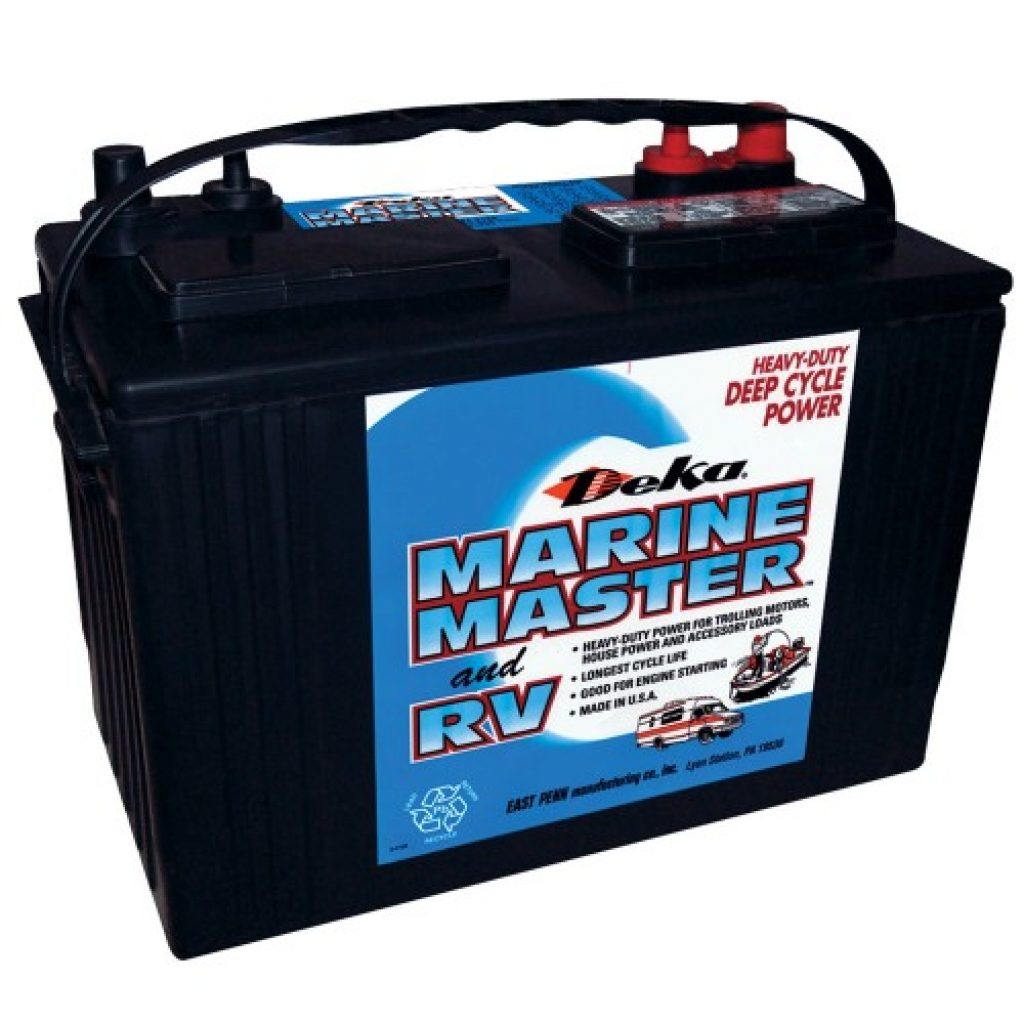
Source: Stevenson Marine.
Don’t confuse or replace these batteries with starter batteries. Starter batteries are like the sprinters of the battery world, providing quick spurts of power over a short time period.
They differ from deep cycle batteries as they need to give short bursts of power to start something up, like a boat motor, which would then run on gas.
You cannot use deep cycle batteries for such applications because they provide sustained power – this would harm the battery’s performance and lifespan.
Related Reading: Can you overcharge a lithium battery?
Types Of Deep Cycle Marine Batteries
There are generally two types of conventional deep cycle marine batteries: flooded (FLA) and valve-regulated lead-acid (VRLA). Lithium-ion batteries are also starting to appear as well.
Flooded
In a flooded battery, the plates are completely submerged by a liquid electrolyte.
The electrolyte actively participates in the redox reaction. The HSO4– reacts with the lead electrodes to form PbSO4.
These batteries require regular maintenance and inspection of their electrolyte fluid levels as a result of water loss during charging.
Valve-Regulated Lead-Acid
VRLA type batteries can be sub-divided into Absorbed Glass Mat (AGM) and Gel batteries. The majority of recommended lead-acid deep cycle batteries are AGM.
AGM batteries are similar in construction to flooded batteries – except for the fact that a fiberglass mat is used between the positive and negative plates to absorb the electrolyte.
Gel batteries use silica to turn the acid electrolyte in the battery into a gel. This gel makes the battery spill-proof, like an AGM, but it can be hazardous due to it being flammable (a risk in high ampere, quick charging, or discharge situations).
Related Reading: How to build a DIY powerwall?
Lithium-ion
Much like in other applications, Lithium-ion batteries are becoming a worthy replacement for conventional lead-acid batteries.
A lithium-ion battery requires an anode, cathode, separator, and electrolyte.
The anode and cathode store the lithium. The electrolyte, made of an organic compound containing lithium salts, transfers the positively charged lithium ions from the anode to the cathode, and vice-versa through the separator.
This displacement of lithium ions results in the creation of free electrons in the anode. Thus, resulting in a positive charge in the current collector.
The separator is used to block the flow of electrons inside the battery and is composed of a thin plastic film. However, its main purpose is to prevent contact between the electrodes.
What To Look For In A Deep Cycle Marine Battery
Weight And Size
Deep cycle marine batteries come in a range of weights and sizes. The most common sizes are 24, 27, 31, 4D, and 8D.
If you’re replacing a current battery, make sure to check its size before purchasing another.
Related reading: How much does a Tesla powerwall cost?
Price
The price point of a battery is a major factor.
In general, deep cycle batteries will set you back over $100. However, they’re well worth the investment if you use them regularly.
Lithium batteries are more expensive, but it’s worth keeping in mind that their greater number of charge-discharge cycles can make them a more viable option in the long term.
They may also cause less hassle given they require less maintenance in comparison to lead-acid batteries.
11 Best Deep Cycle Marine Batteries
Now that we’ve covered what a deep cycle marine battery is, let’s delve into the best deep cycle marine batteries on the market!
1. Optima 34M BlueTop, 12V, 50Ah

Overview:
Made by one of the best AGM marine battery manufacturers, the Optima BlueTop can be used both as a deep-cycle and starter battery, at the same time.
This battery is known for its durability. Additionally, you can mount it in any position.
It weighs 43.5 pounds and its dimensions are 10 x 6.88 x 7.8 inches.
Product Size:
| Weight | 43.5 lbs |
| Dimensions | 10 x 6.88 x 7.8 inches. |
Related reading: What can I run off a 100Ah battery?
2. Odyssey Trolling Thunder, 12V, 103Ah
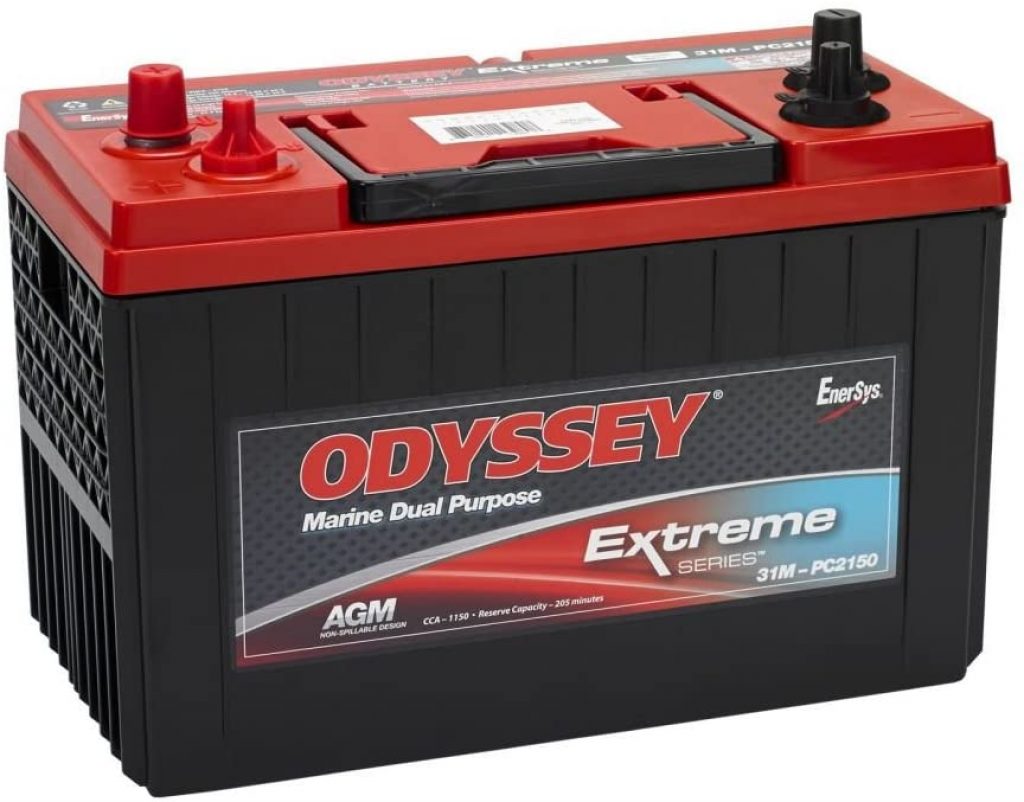
Overview:
This is one of the best dual-purpose marine battery options around. It’s dual-purpose with a great capacity, C-Rate, and warranty.
You’ll be able to recharge it in 4-6 hours it has one of the highest recharge efficiencies of any sealed lead battery on the market.
Product Size:
| Weight | 77.8 lbs |
| Dimensions | 16.8 x 11.1 x 11.9 inches. |
3. Bass Pro
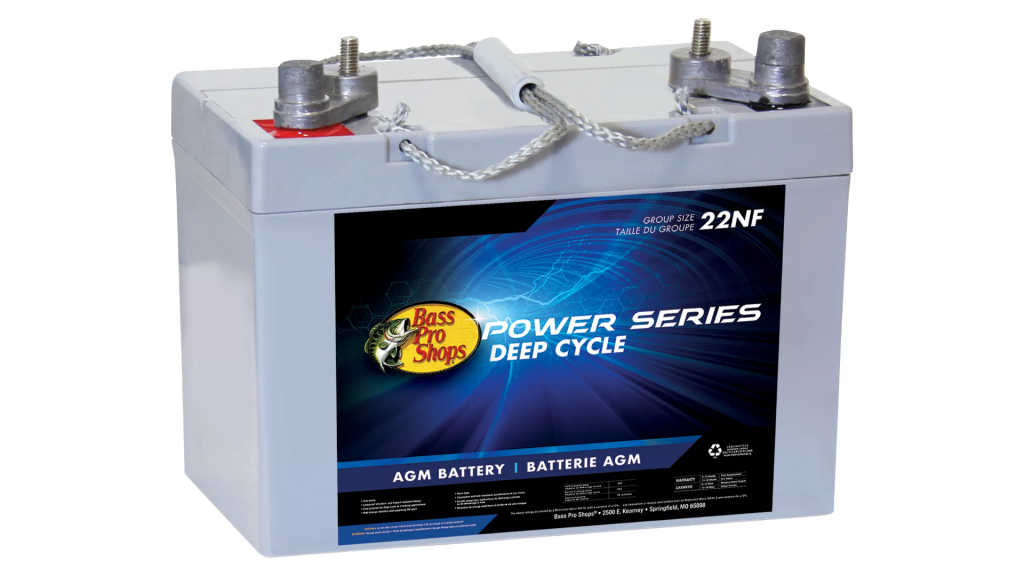
Overview:
Bass Pro is a great choice for powering a small to medium-sized engine.
It has a CCA rating of 545 amps and a reserve capacity of 120 minutes at 25 amps.
What’s more, it has a one-year free replacement and a 36-month pro-rated marine battery warranty.
Product Size:
| Weight | 54 pounds |
| Dimensions | 6.75 x 8.75 x 10.87 inches. |
4. Mighty Max, 12V, 35Ah
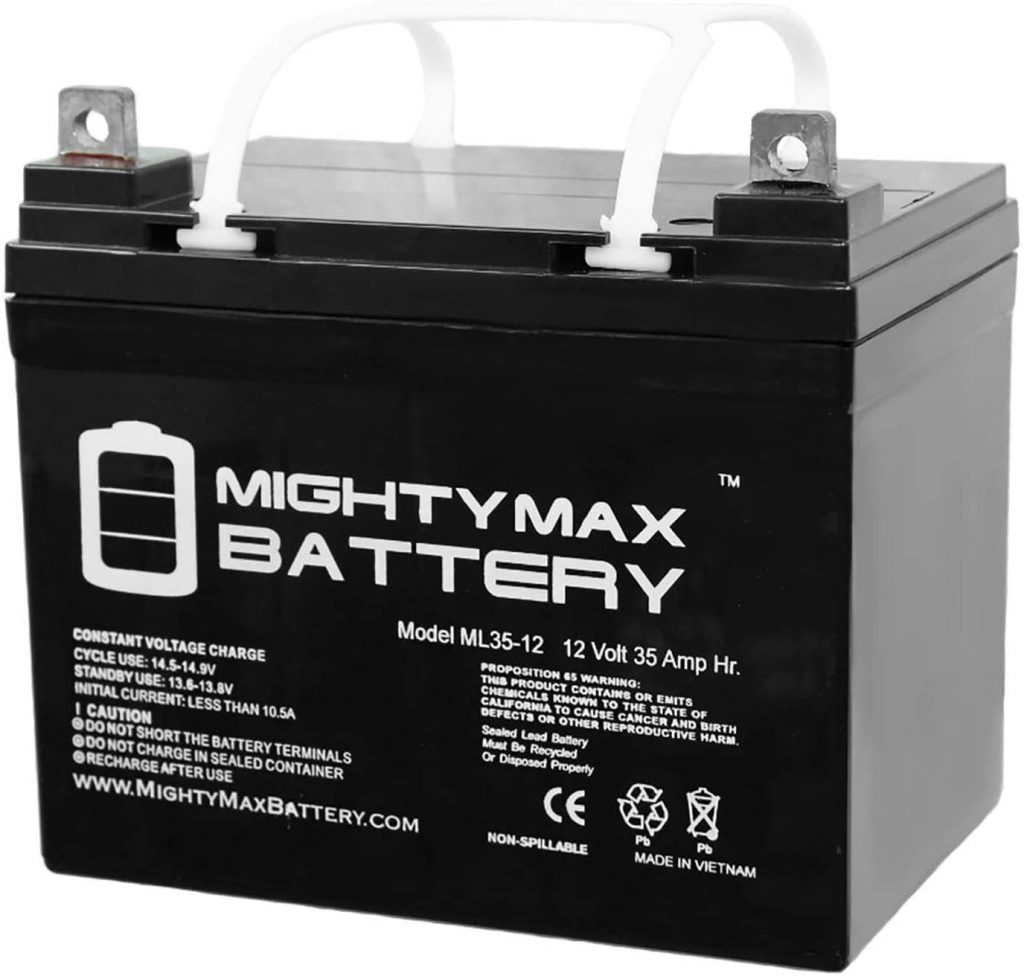
Overview:
Mighty Max has a great price point and is ideal for smaller motors.
Some customers do recommend getting two batteries and wiring them up to get 70 amp hours for less than a top-brand single battery.
This battery offers all the benefits of AGM construction including zero leaking or maintenance. It can also be installed at almost any angle
Product Size:
| Weight | 23.25 pounds |
| Dimensions | 5.16 x 7.68 x 7.13 inches. |
Related reading: How to convert 12V to 24V?
5. V Max, 12V, 135Ah
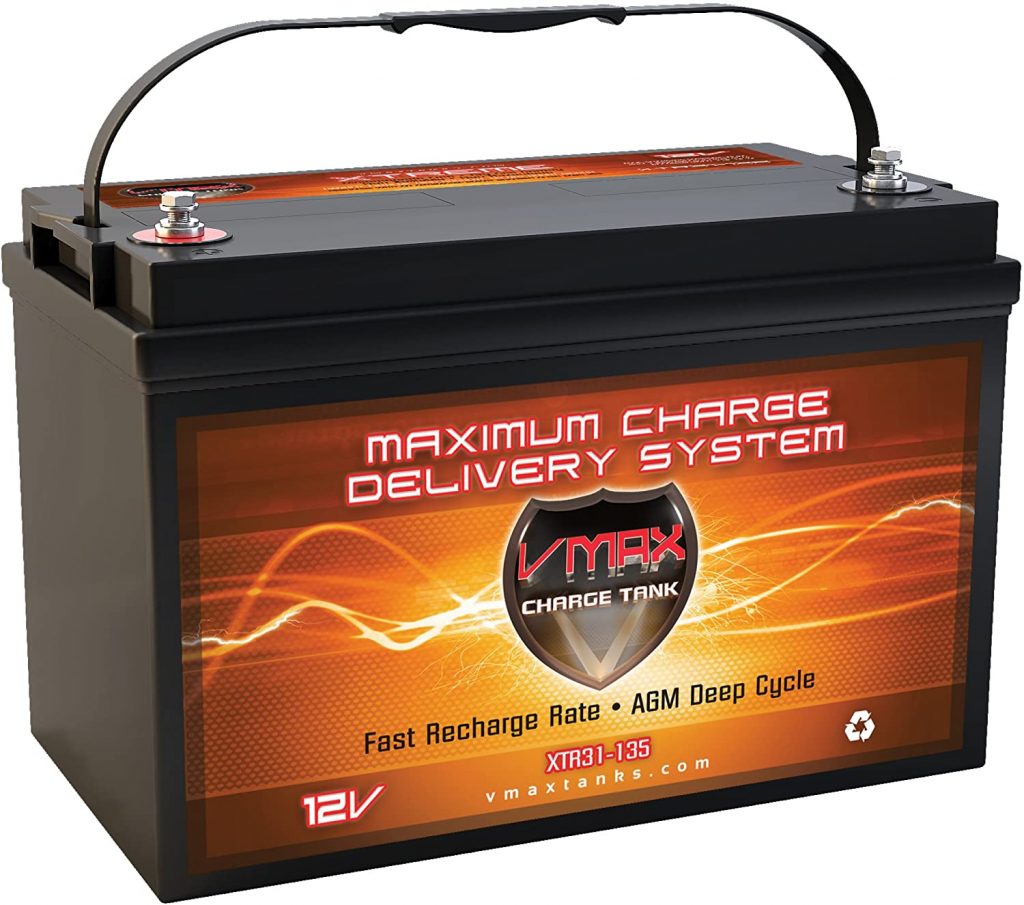
Overview:
V Max has one of the largest capacities on this list and is an excellent C-rate battery, able to give you all the simultaneous amps you may need.
Its 135 Ah capacity means that you can get up to 6.75 amps for 20 hours.
Product Size:
| Weight | 77 lbs |
| Dimensions | 13 x 6.8 x 8.4 inches. |
6. Renogy, 12V, 100Ah

Renogy is a great battery option for its price point. This battery is able to give you high capacity and operating amperage at a fraction of the price of other options.
Product Size:
| Weight | 66 lbs |
| Dimensions | 3 x 6.8 x 9 inches. |
Related reading: 7 Most reliable 100Ah batteries
7. ExpertPower, 12V, 5-200Ah, Lithium-Ion
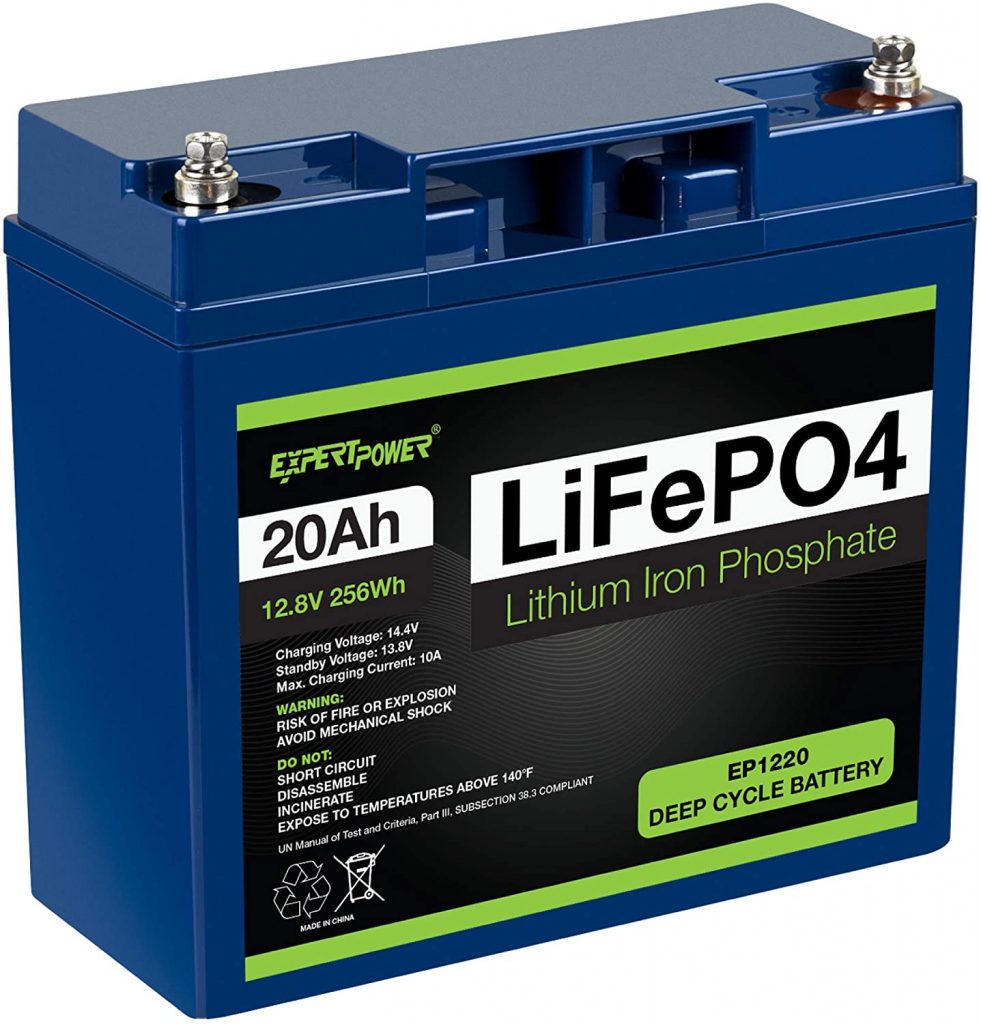
ExpertPower offers one of the lightest models on this list. This marine battery provides a relatively low capacity but an excellent C-rate.
The battery has an installed capacity of 20 Ah and can provide a steady discharge current of 30 amps.
Product Size:
| Weight | 5.8 lbs |
| Dimensions | 7.1 x 3 x 6.6 inches. |
8. ECI Power, 12V, 20Ah

ECI Power offers another great Lithium-ion deep cycle marine battery.
Again, this option is a great battery for its price point.
Product Size:
| Weight | 5.8 lbs |
| Dimensions | 7.1 x 3 x 6.6 inches. |
9. Battle Born, 12V, 100Ah
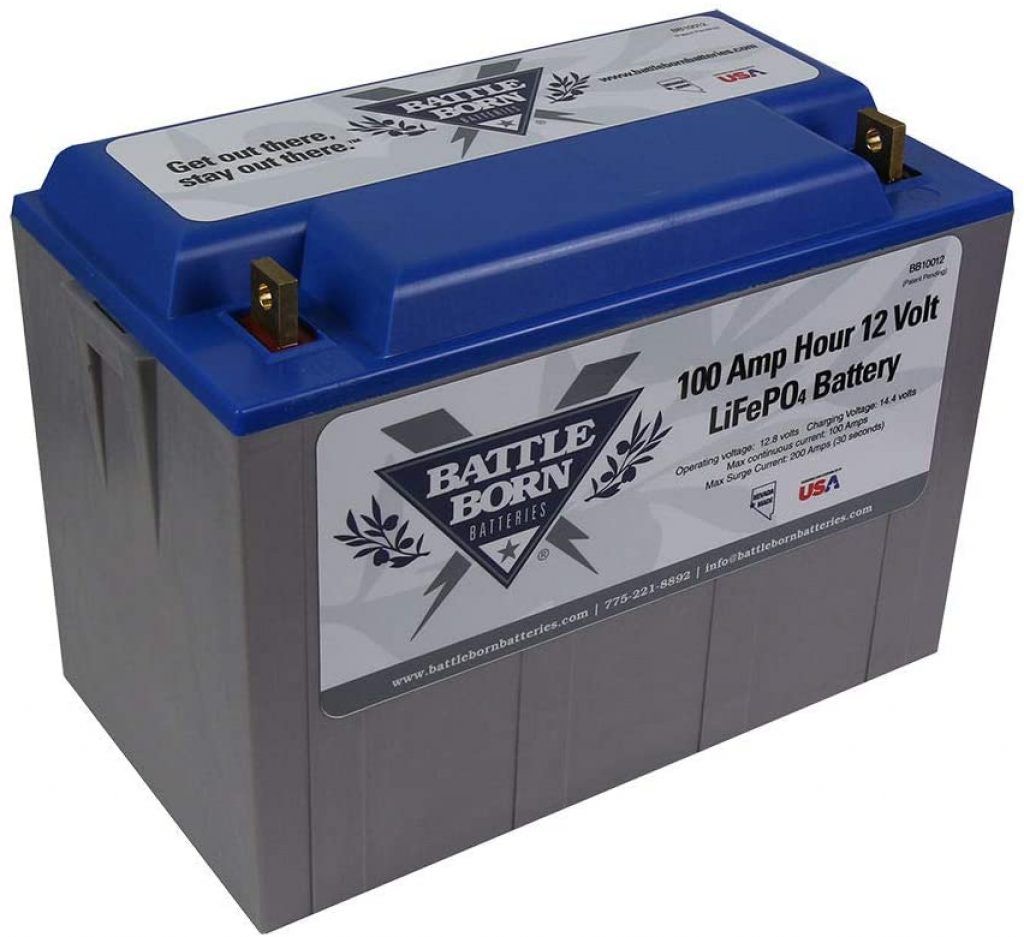
Battle Born offers around 2-3 times the power of a similar-sized lead-acid battery.
Additionally, Lithium-ion technology makes it safer and claims to last 10 times longer.
This battery also has a Battery Management System, which ensures its durability.
Product Size:
| Weight | 29 lbs |
| Dimensions | 12.75 x 6.88 x 9 inches. |
Related reading: How to recycle a lithium battery?
10. Chins, 12V, 300Ah
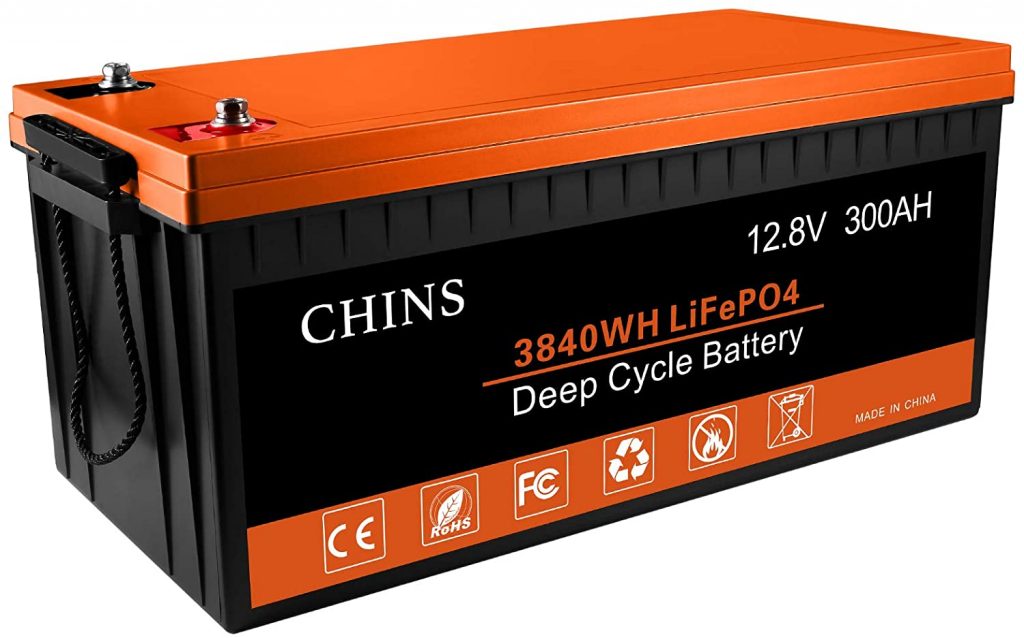
Chins are known to make reliable and powerful deep cycle batteries.
This battery offers a similar capacity to a lead-acid battery, but with an 8 to 10 times longer life.
It also has a 100% depth of discharge, meaning it can be used until completely drained.
Once drained, it can be fully charged up again in just 7 hours.
Product Size:
| Weight | 68.34 lbs |
| Dimensions | 20.47 x 8.66 x 10.59 inches. |
11. Ampere Time, 12V, 300Ah
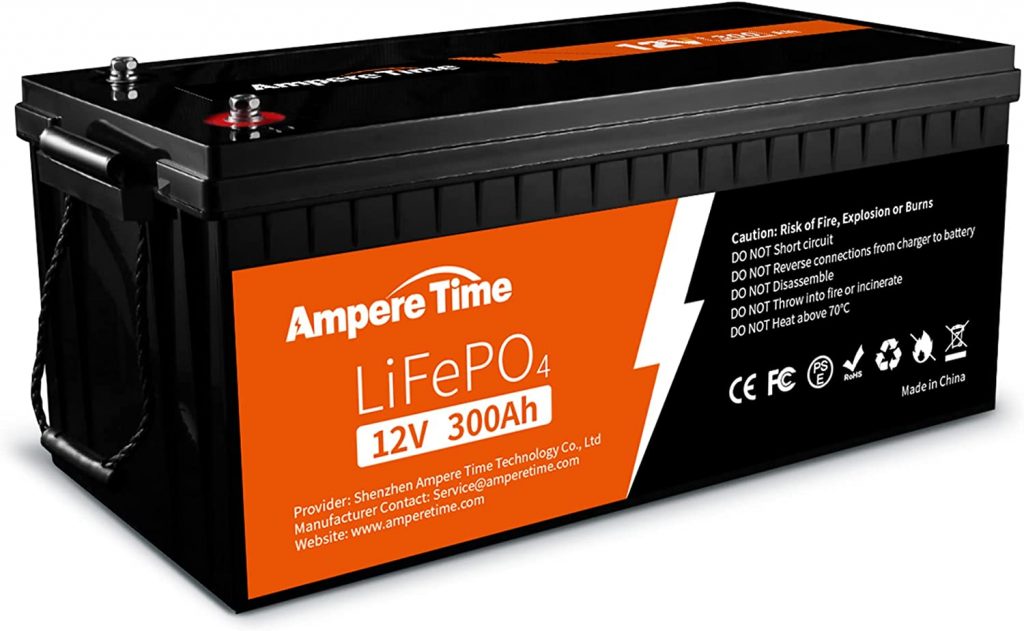
AMpere TIme has over 12 years of experience in producing LiFePO4 batteries and is a solid deep cycling battery option.
This battery has an expected life of over 4000 charges, after which it can still be used, albeit at a lower capacity.
What’s, the cells in the battery are very safe with a UL Testing Certificate and the battery comes with IP65 level waterproof features.
Product Size:
| Weight | 5.8 lbs |
| Dimensions | 7.1 x 3 x 6.6 inches. |
Are Deep Cycle Marine Batteries Safe To Use On Boats?
Deep cycle batteries are 100% safe to use on boats. They’re always stored in durable and vibration-resilient casings and can be mounted in any position. Some offer increased safety benefits such as IP waterproofing or enhanced internal structure designs (AGM rather than flooded lead-acid batteries).
How Long Do Deep Cycle Marine Batteries Last?
This depends on the battery type. A lead-acid battery generally will last between 500 and 1000 cycles, while a lithium marine battery between 3000 and 5000 cycles.
On top of this, lead-acid batteries require much more maintenance, which can be a critical factor for battery lifetime. Such batteries can work reliably up until around 20% charge. However, most manufacturers recommend not discharging below 45%, in order to preserve battery life.
Final Thoughts
While similar to a car battery, don’t be tempted to downgrade to one. A marine battery is specifically designed to withstand the test of the seas and will last you much longer. They’ll typically set you back over $100, but they’re most certainly worth the investment.
Lithium batteries are proving themselves as being a worthy contender for deep cycle needs. This is thanks to their reduced weight and maintenance, as well as being lighter; an important consideration for boats!

